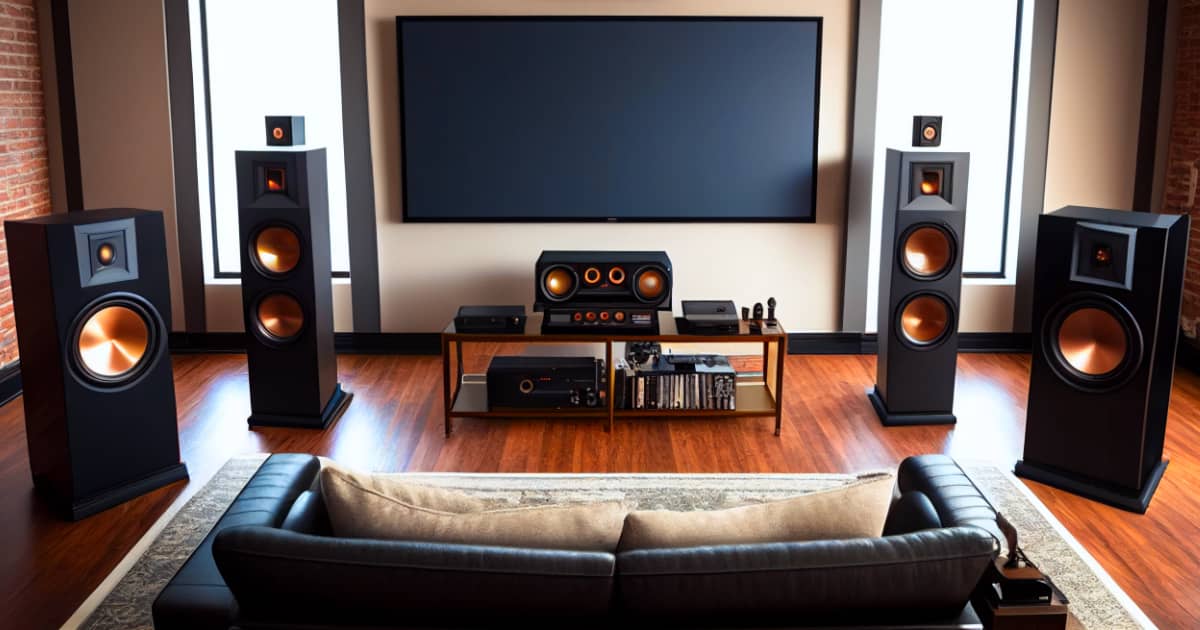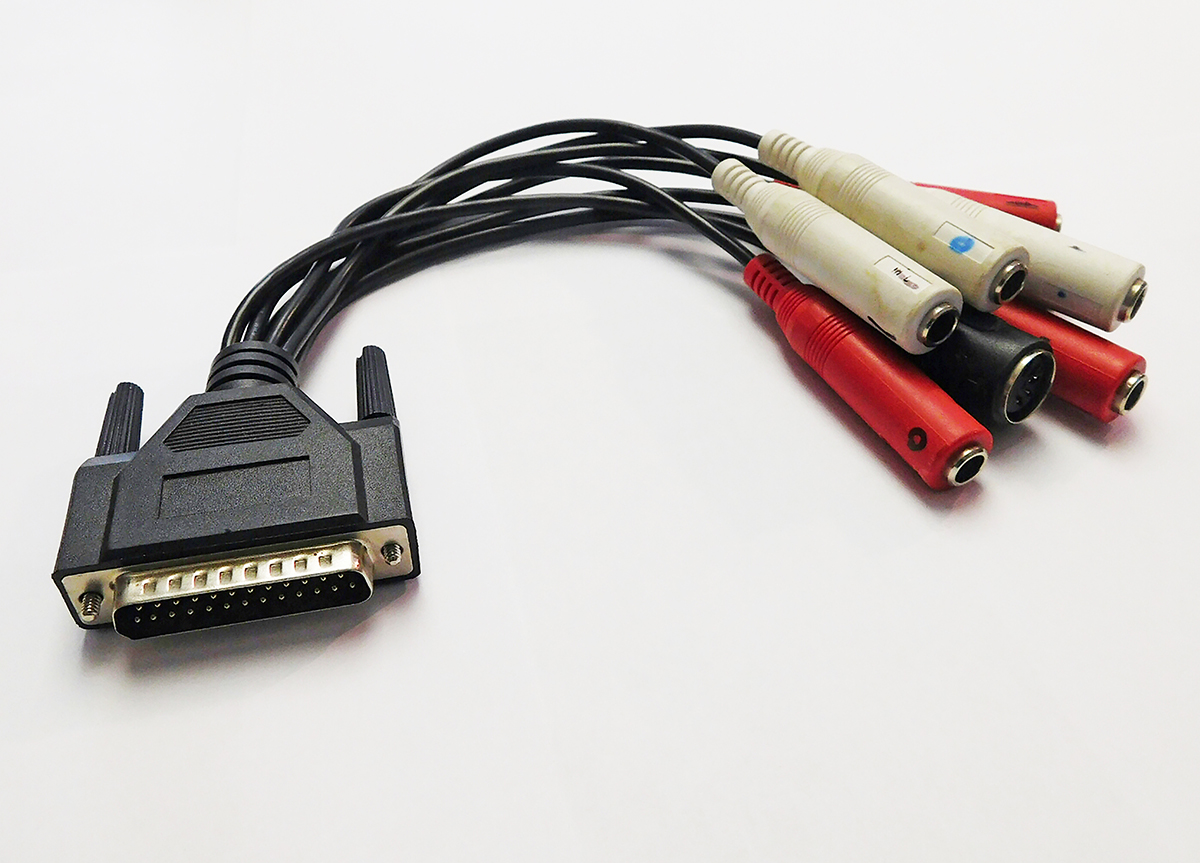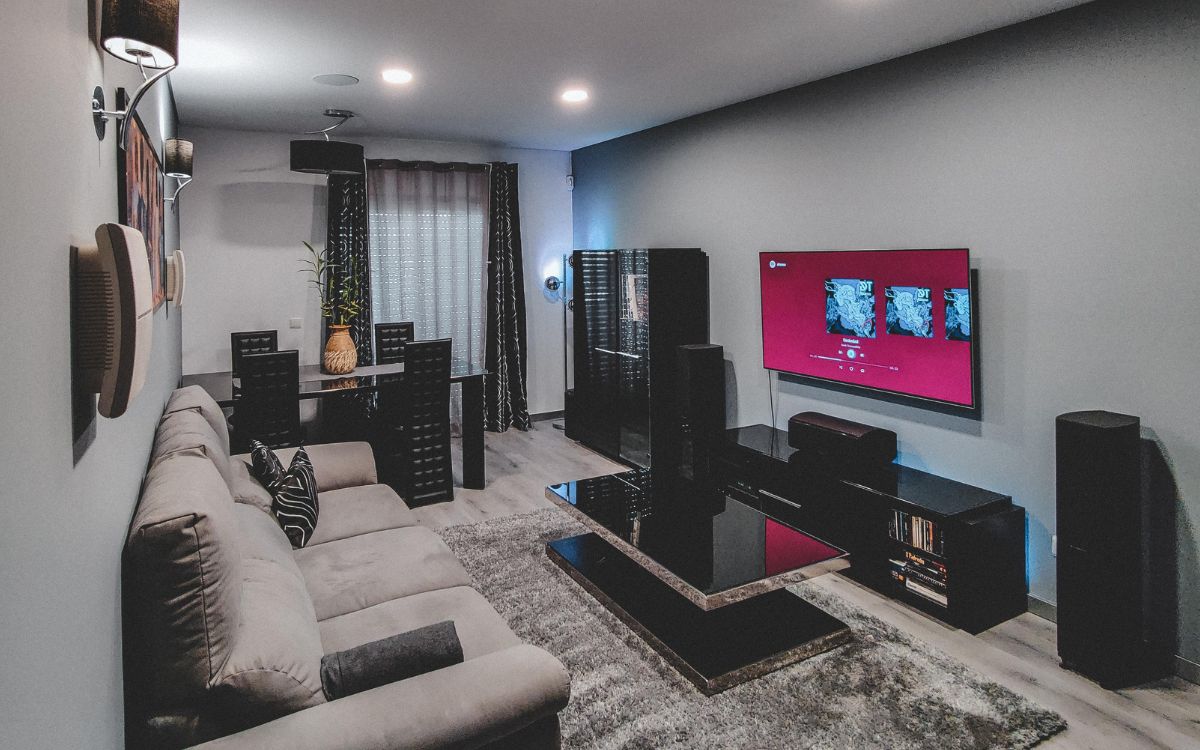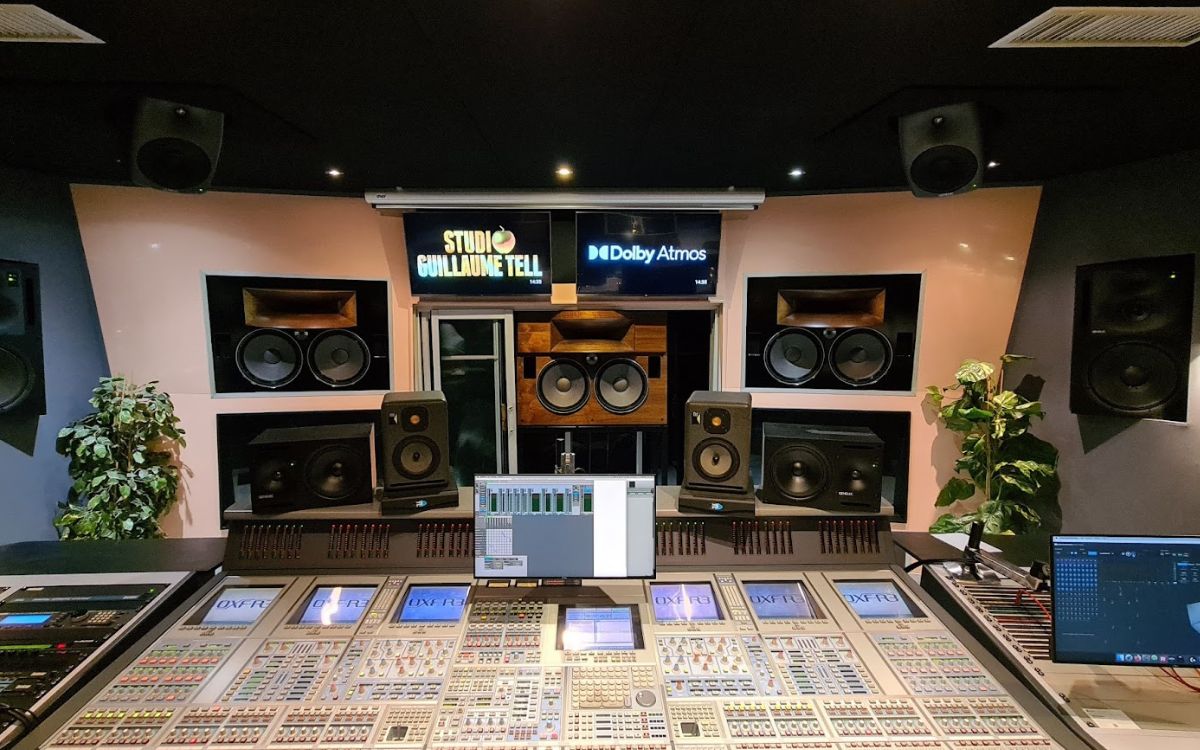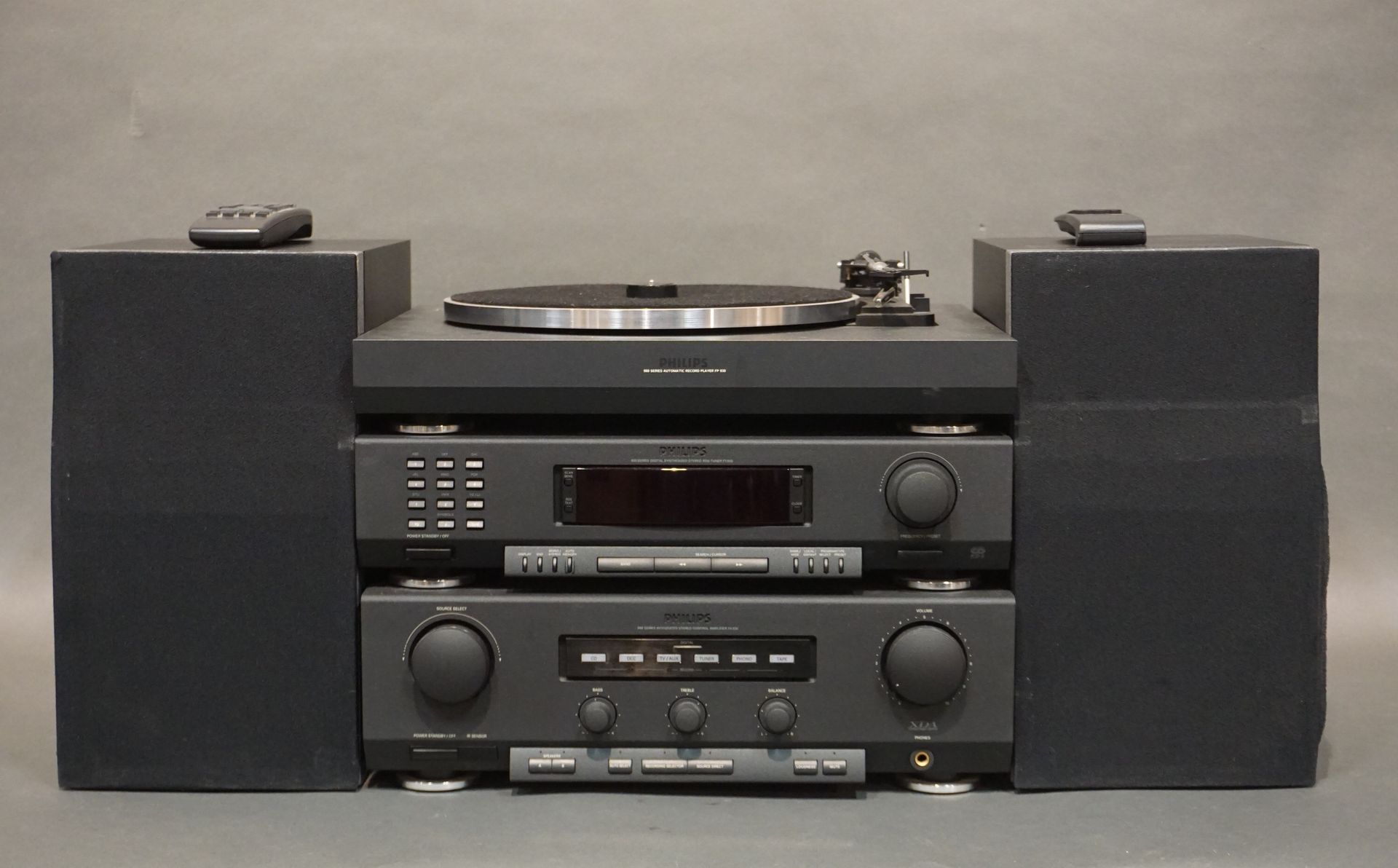Home>Production & Technology>Surround Sound>What Kind Of Amplifier Should I Use For Home Surround Sound
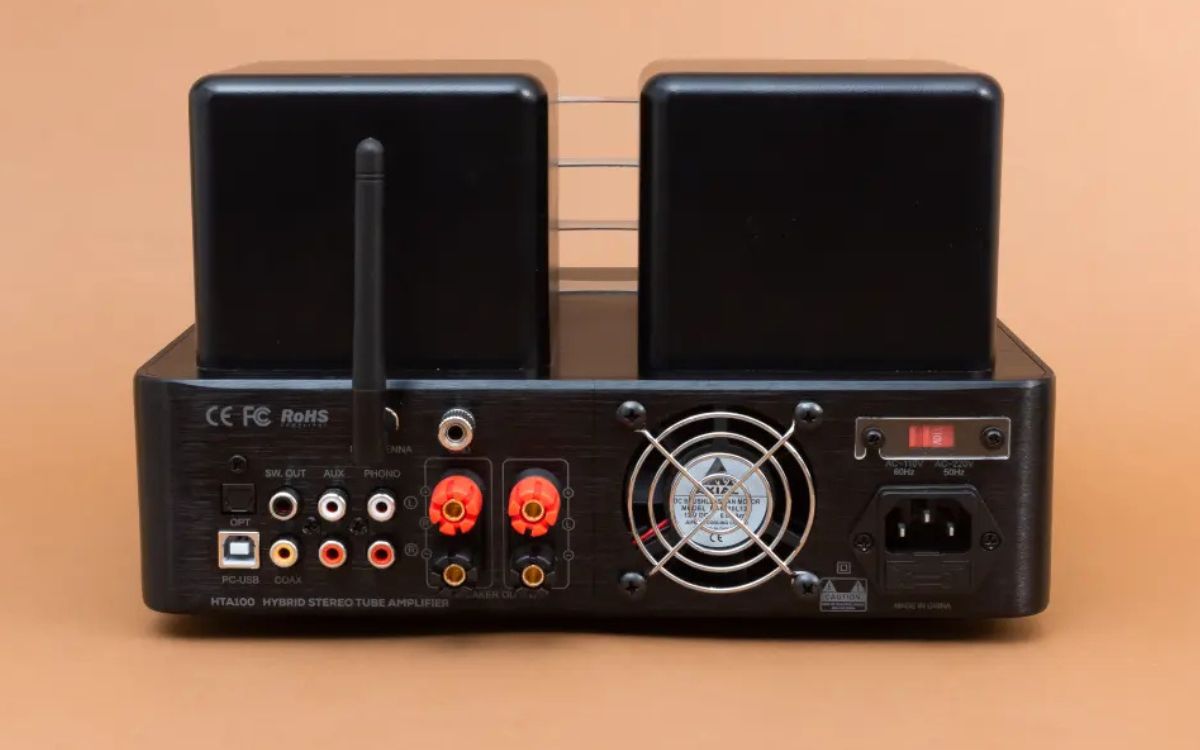

Surround Sound
What Kind Of Amplifier Should I Use For Home Surround Sound
Modified: January 22, 2024
Looking for the perfect amplifier for your home surround sound system? Discover the ideal options to enhance your audio experience with surround sound.
(Many of the links in this article redirect to a specific reviewed product. Your purchase of these products through affiliate links helps to generate commission for AudioLover.com, at no extra cost. Learn more)
Table of Contents
- Introduction
- Understanding Home Surround Sound Systems
- Importance of Choosing the Right Amplifier
- Factors to Consider When Choosing an Amplifier
- Types of Amplifiers for Home Surround Sound
- Advantages and Disadvantages of Different Amplifier Types
- Matching the Amplifier to Your Surround Sound System
- Setting Up and Configuring Your Amplifier for Home Surround Sound
- Tips for Optimizing Your Amplifier Performance
- Conclusion
Introduction
Welcome to the world of immersive audio! Whether you’re a movie lover, a music enthusiast, or a gaming aficionado, having a home surround sound system can take your audio experience to a whole new level. But to truly harness the power of surround sound, it’s crucial to choose the right amplifier that can bring out the full potential of your speakers.
A surround sound system consists of multiple speakers strategically placed around the room to create a three-dimensional audio experience. It envelops you in sound, making you feel like you’re right in the middle of the action. However, without a high-quality amplifier, you won’t be able to truly appreciate the intricate details and dynamic range that surround sound has to offer.
Choosing the right amplifier for your home surround sound system can be quite overwhelming with the myriad of options available in the market. But fear not, as this comprehensive guide will walk you through all the important factors to consider and help you make an informed decision.
Whether you’re a beginner looking to set up your first surround sound system or a seasoned audio enthusiast looking to upgrade your existing setup, this guide will provide valuable insights to ensure you choose the perfect amplifier that suits your audio preferences and budget.
In the following sections, we will explore the different types of amplifiers available for home surround sound systems, their advantages and disadvantages, and how to match the amplifier to your specific setup. We will also delve into the process of setting up and configuring the amplifier for optimal performance, as well as provide useful tips to enhance your overall audio experience.
So, strap in and get ready to elevate your audio experience to new heights as we embark on this journey into the world of home surround sound systems and amplifiers.
Understanding Home Surround Sound Systems
Before delving into the intricacies of amplifiers, it’s important to have a good understanding of home surround sound systems. Surround sound technology is designed to replicate the immersive audio experience found in movie theaters right in the comfort of your own home.
A surround sound system typically consists of multiple speakers strategically placed around the room to create a three-dimensional audio field. These speakers work in harmony to generate a lifelike soundstage, with different channels delivering specific audio signals.
The most common configuration for a surround sound system is the 5.1 setup, which includes five main speakers and one subwoofer. The five main speakers are the front left, front right, center, surround left, and surround right speakers. The subwoofer is responsible for reproducing deep bass frequencies, adding depth and impact to the audio experience.
With technological advancements, more advanced configurations like 7.1, 9.1, or even 11.1 have become increasingly popular. These configurations add additional speakers for an even more immersive audio experience.
When it comes to decoding and processing surround sound signals, there are several audio formats to consider, including Dolby Digital, DTS (Digital Theater Systems), and THX. These formats determine how the audio is encoded and provide the necessary data for the amplifier to distribute the sounds to the appropriate speakers.
Understanding the different audio formats and speaker configurations is essential when choosing an amplifier, as it needs to be compatible with your specific setup. Additionally, having a basic knowledge of these concepts will help you make informed decisions when fine-tuning your surround sound system for optimal performance.
Now that we have a grasp of the fundamentals of home surround sound systems, let’s move on to the next section and explore the importance of choosing the right amplifier to bring your audio experience to life.
Importance of Choosing the Right Amplifier
When it comes to home surround sound systems, the amplifier plays a crucial role in delivering high-quality audio performance. It acts as the central hub, receiving audio signals from your source (such as a Blu-ray player or game console) and distributing them to the appropriate speakers.
The amplifier not only amplifies the audio signals but also handles the decoding and processing of various surround sound formats. It ensures that each speaker receives the correct audio signal, allowing you to experience the full impact of the soundtrack, music, or game audio.
Choosing the right amplifier for your home surround sound system is essential for several reasons:
- Power and Performance: An amplifier with sufficient power output is crucial to drive your speakers effectively. Insufficient power can result in distorted or weak sound, compromising the overall audio experience. A high-quality amplifier provides ample power to reproduce the dynamic range of the audio accurately.
- Compatibility: Different speakers have different power requirements and impedance levels. An amplifier compatible with your speakers ensures that they work together harmoniously, preventing damage to your speakers and maintaining the integrity of the audio signal.
- Audio Fidelity: A well-designed amplifier can enhance the clarity, detail, and spatial imaging of the audio. It minimizes distortion and noise, delivering a clean and accurate sound reproduction.
- Flexibility and Features: Amplifiers often come with various connectivity options, allowing you to connect multiple audio sources and devices. They may also offer advanced features like equalization, room correction, and audio presets, allowing you to fine-tune the sound to your preferences and adapt to different room environments.
- Future-Proofing: Investing in a high-quality amplifier ensures that your system can adapt to future advancements in audio technology. It provides room for future expansion, allowing you to add additional speakers or upgrade to higher-quality components without needing to replace the entire amplifier.
In summary, choosing the right amplifier is vital to ensure optimal performance, compatibility, and flexibility for your home surround sound system. It can make a significant difference in your audio experience, immersing you in the action, music, or gameplay and bringing out the true potential of your speakers.
Now that we understand the importance of selecting the right amplifier, let’s move on to the next section, where we will explore the factors to consider when choosing an amplifier for your home surround sound system.
Factors to Consider When Choosing an Amplifier
Choosing the right amplifier for your home surround sound system requires careful consideration of several key factors. By taking these factors into account, you can ensure that the amplifier you select is compatible with your existing setup and meets your audio needs and preferences. Here are the main factors to consider:
- Power Output: The power output of an amplifier is measured in watts per channel. It determines how loud and dynamic the sound can be. Consider the power requirements of your speakers and room size to select an amplifier that can deliver sufficient power without distortion.
- Impedance: Impedance refers to the resistance of the speakers. Make sure that the amplifier’s impedance rating matches or is within the recommended range of your speakers. Mismatches can result in poor sound quality or damage to the speakers.
- Connectivity Options: Check the available connectivity options on the amplifier. Ensure that it has the necessary inputs and outputs to connect all your audio sources and speakers. Look for HDMI inputs and outputs, optical or coaxial digital inputs, analog RCA inputs, and any other specific connectors you might need.
- Surround Sound Formats: Consider the compatibility of the amplifier with the surround sound formats you plan to use, such as Dolby Digital or DTS. Ensure that the amplifier can decode and process these formats to deliver the intended audio experience.
- Number of Channels: The number of channels required depends on the speaker configuration of your surround sound system. A 5.1 system needs at least six channels (five main channels and one subwoofer), while more advanced setups like 7.1 or 9.1 require additional channels. Make sure the amplifier has the necessary number of channels to accommodate your speaker setup.
- Features and Controls: Consider the additional features offered by the amplifier, such as tone control, equalizer settings, room correction, and remote control. These features can enhance your audio experience and provide more control over the sound output.
- Budget: Set a budget range for your amplifier purchase. Amplifiers come in various price ranges, and it’s important to find a balance between your desired features and your budget. Remember that a higher price doesn’t always guarantee better audio quality, so do thorough research and read reviews before making a decision.
By carefully considering these factors, you can narrow down your choices and find an amplifier that caters to your specific needs. It’s recommended to visit audio stores, read reviews, and seek expert advice to ensure that you make an informed decision and find the amplifier that will best elevate your home surround sound experience.
Now that we’ve covered the important factors to consider when selecting an amplifier, let’s explore the different types of amplifiers available for home surround sound systems in the next section.
Types of Amplifiers for Home Surround Sound
When it comes to amplifiers for home surround sound systems, there are several different types available, each with its own unique characteristics and advantages. Understanding the different amplifier types can help you make an informed decision when choosing the best option for your setup. Here are the main types of amplifiers used in home surround sound systems:
- AV Receivers: AV receivers are the most common and versatile type of amplifier for home surround sound. They not only provide amplification for your speakers but also serve as a central hub for your audio and video sources. AV receivers typically offer multiple channels of amplification, ranging from 5.1 to more advanced configurations like 7.1 or 9.1. They also come with built-in decoders for various surround sound formats, offering convenience and flexibility in one package.
- Stereo Amplifiers: Stereo amplifiers, also known as two-channel amplifiers, are designed for stereo audio setups. While they may not have the same number of channels as AV receivers, they can still be used effectively in a surround sound system by combining them with additional amplifiers or a separate audio processor. Stereo amplifiers usually offer higher power output per channel, resulting in cleaner and more detailed sound reproduction.
- Pre-Amplifiers and Power Amplifiers: Pre-amplifiers and power amplifiers are separate components that can be used in combination to create a customized amplifier setup. Pre-amplifiers handle the audio processing and control functions, while power amplifiers provide the necessary amplification for the speakers. This modular approach allows for more flexibility in terms of upgrading or expanding the system in the future, but it requires additional space and cabling.
- Surround Sound Processors: Surround sound processors, or audio processors, are designed specifically for processing and decoding surround sound signals. They are often used in conjunction with power amplifiers to create a customized amplifier setup. Surround sound processors offer advanced features and control options, allowing for precise fine-tuning of the audio output. They are typically used in high-end home theater setups where audio quality and customization are paramount.
- Solid-State Amplifiers: Solid-state amplifiers use transistors and integrated circuits to amplify the audio signals. They are known for their efficiency, reliability, and compact size. Solid-state amplifiers can deliver ample power and can work well in most home surround sound systems. They offer a clean and precise sound reproduction, making them a popular choice among audio enthusiasts.
- Tube Amplifiers: Tube amplifiers, also known as valve amplifiers, use vacuum tubes to amplify the audio signals. They are renowned for their warm and smooth sound characteristics, often described as “tube sound.” Tube amplifiers are favored by audiophiles for their ability to add a certain richness and harmonic distortion to the audio, resulting in a more vintage and nostalgic sound experience.
Each type of amplifier has its own unique sonic signature and features, and the best choice for your home surround sound system will depend on your personal preferences, budget, and the specific requirements of your setup. Keep in mind that the amplifier selected should be capable of delivering sufficient power and provide the necessary features and connectivity options for your audio sources and speakers.
Now that we understand the different types of amplifiers available, let’s explore the advantages and disadvantages associated with each type in the next section.
Advantages and Disadvantages of Different Amplifier Types
Each type of amplifier used in home surround sound systems comes with its own set of advantages and disadvantages. Understanding these can help you make an informed decision based on your specific needs and preferences. Here are the advantages and disadvantages of the different amplifier types:
- AV Receivers:
- Advantages:
- Convenient all-in-one solution with built-in decoders and amplification
- Multiple channels for comprehensive surround sound setups
- Wide range of features, connectivity options, and compatibility with various audio and video sources
- Disadvantages:
- Potential compromises in audio quality compared to separate components
- Limited power output per channel compared to dedicated amplifiers
- Stereo Amplifiers:
- Advantages:
- Higher power output per channel for cleaner and more detailed sound reproduction
- Can be paired with additional amplifiers or audio processors for surround sound setups
- May offer better stereo audio performance compared to AV receivers
- Disadvantages:
- Limited number of channels, requiring additional components for surround sound setups
- May lack built-in decoders and features found in AV receivers
- Pre-Amplifiers and Power Amplifiers:
- Advantages:
- Modular and customizable setup, allowing for future upgrades and expansion
- Potential for higher audio quality and performance compared to integrated amplifiers
- Disadvantages:
- Requires additional space and cabling for separate components
- May result in a higher overall cost compared to integrated amplifiers
- More complex setup and configuration
- Surround Sound Processors:
- Advantages:
- Advanced audio processing and decoding capabilities for precise sound control
- Customizable controls and features for fine-tuning the audio output
- Disadvantages:
- Requires separate power amplifiers for complete amplification
- Higher cost compared to integrated AV receivers
- Solid-State Amplifiers:
- Advantages:
- Efficient, reliable, and compact design
- Delivers clean and precise sound reproduction
- Disadvantages:
- May lack the warmth and character associated with tube amplifiers
- Less customizable compared to advanced audio processors
- Tube Amplifiers:
- Advantages:
- Provides a warm and rich sound with harmonic distortion
- Offers a vintage and nostalgic audio experience
- Disadvantages:
- Requires regular maintenance and tube replacements
- Typically more expensive compared to solid-state amplifiers
- May lack certain modern features and connectivity options
Consider these advantages and disadvantages, keeping in mind your audio preferences, budget, and the specific requirements of your surround sound system. It’s recommended to audition different amplifiers and seek expert advice before making a final decision.
Next, let’s explore how to match the amplifier to your surround sound system and ensure optimal performance.
Matching the Amplifier to Your Surround Sound System
Matching the amplifier to your surround sound system is crucial for optimal performance and compatibility. Since amplifiers come in different configurations and power ratings, it’s important to ensure that the amplifier you choose is suitable for your specific setup. Here are some steps to help you match the amplifier to your surround sound system:
- Determine Your Speaker Configuration: Identify the number of speakers in your surround sound system. The most common configuration is 5.1, which includes five main speakers and one subwoofer. However, there are also more advanced configurations like 7.1 or 9.1, with additional speakers for a more immersive experience.
- Check Power Requirements: Review the power requirements of your speakers. Each speaker will have a recommended power range, typically specified in watts. Ensure that the amplifier you choose can deliver sufficient power to each speaker without causing distortion or damage. It’s recommended to select an amplifier with a power output that exceeds the minimum requirements of your speakers.
- Consider Impedance Match: Take into account the impedance rating of both the amplifier and the speakers. The impedance should match or be within the range recommended by the manufacturer. Mismatched impedance can lead to poor audio quality and potential damage to the amplifier or speakers. It’s essential to choose an amplifier that can handle the impedance of your speakers.
- Connectivity Options: Ensure that the amplifier has the necessary inputs and outputs to accommodate your audio sources and speakers. Check for compatible audio connections such as HDMI, optical, RCA, or speaker wire terminals. If you have specific connectivity requirements or devices, make sure the amplifier can fulfill those needs.
- Surround Sound Compatibility: Verify that the amplifier is compatible with the surround sound formats you plan to use. Common formats include Dolby Digital and DTS. The amplifier should have the necessary decoders and processing capabilities to reproduce these formats accurately.
- Budget Considerations: Keep your budget in mind when choosing an amplifier. While it’s important to invest in a quality amplifier, you should also strike a balance between performance and cost. Consider your needs and prioritize the features and specifications that are essential for your surround sound system.
Matching the amplifier to your surround sound system ensures that you have the necessary power, compatibility, and connectivity for optimal audio performance. It’s always recommended to seek expert advice and consult with audio professionals, who can assist you in selecting the best amplifier that fits your requirements and budget.
Once you have chosen and matched your amplifier, the next step is setting up and configuring it for your home surround sound system. We will explore this in the next section.
Setting Up and Configuring Your Amplifier for Home Surround Sound
Once you have chosen the right amplifier for your home surround sound system, the next step is to set it up and configure it correctly to ensure optimal performance. Follow these steps to properly set up and configure your amplifier:
- Placement: Find a suitable location for your amplifier. Ensure that it has enough space for ventilation and that it’s not placed on top of other electronic devices that could cause interference.
- Connection: Connect your audio sources, such as a Blu-ray player or game console, to the appropriate inputs on the amplifier. Use the recommended cables and connections for each device, such as HDMI for video and digital coaxial/optical or analog RCA for audio.
- Speaker Connection: Connect each speaker to the corresponding output terminals on the amplifier. Use high-quality speaker wire, ensuring that you connect the positive (+) and negative (-) terminals correctly to maintain proper phase alignment.
- Subwoofer Connection: If you have a subwoofer, connect it to the designated subwoofer output on the amplifier. Some amplifiers have a dedicated subwoofer output, while others may require a separate subwoofer pre-out connection.
- Correct Channel Assignment: Verify that the speakers are assigned to the correct channels on the amplifier. For example, the front left speaker should be connected to the front left channel on the amplifier. This ensures that the audio signals are correctly distributed to each speaker.
- Audyssey or Room Correction Setup: If your amplifier has room correction or Audyssey calibration features, follow the manufacturer’s instructions to run the calibration process. This fine-tunes the audio output based on the acoustics and layout of your room.
- Audio Settings: Configure the audio settings on the amplifier according to your preferences. Adjust the bass and treble levels, balance the volume levels of each speaker, and explore other available audio enhancement features, such as surround modes or equalization.
- Testing and Fine-Tuning: Play various sources, such as movies, music, or games, to test the audio output. Listen carefully to ensure that the sound is balanced across all speakers, with no distortion or abnormal noise. Make adjustments as necessary to achieve the desired audio performance.
- Remote Control Programming: If your amplifier comes with a remote control, program it to work with your audio sources and other devices in your home theater setup. This allows for convenient control of the amplifier and other connected devices.
Properly setting up and configuring your amplifier ensures that you can enjoy the best possible audio performance from your surround sound system. Take your time to carefully follow the instructions provided by the manufacturer and consult their documentation or online resources if needed. Additionally, don’t hesitate to seek assistance from audio professionals or experienced enthusiasts to ensure an optimal setup.
Now that your amplifier is set up and configured, let’s explore some tips for optimizing its performance in the next section.
Tips for Optimizing Your Amplifier Performance
To maximize the performance of your amplifier in your home surround sound system, consider implementing the following tips:
- Proper Ventilation: Ensure that your amplifier has adequate ventilation to prevent overheating. Avoid placing it in enclosed spaces or near heat sources. Consider using cooling fans or installing it in a well-ventilated equipment rack.
- Manage Power and Grounding: Use a dedicated power outlet for your amplifier to minimize electrical interference. Connect all components in your audio system to a common ground point to reduce ground loops and minimize potential noise issues.
- Speaker Placement and Calibration: Position your speakers according to the recommended guidelines for your specific surround sound configuration. Experiment with speaker placement and use room correction features, if available, to optimize the audio performance in your listening environment.
- Cable Quality: Use high-quality cables for all audio connections between your amplifier, sources, and speakers. Good quality cables help minimize signal loss and interference, resulting in cleaner audio transmission.
- Upgrade Speaker Wire: Consider upgrading your speaker wire if you are using thin or low-quality cables. Higher gauge and better quality speaker wire can improve the power transfer to your speakers, resulting in improved audio performance.
- Regular Maintenance: Clean your amplifier and its components regularly using a soft cloth. Dust and debris can accumulate and affect the performance and longevity of your amplifier. Check and clean the connectors periodically to ensure reliable connections.
- Room Acoustics: Optimize the acoustics of your listening room by using acoustic panels, area rugs, or curtains to minimize reflections and echoes. Consider room treatments specifically designed for audio environments to enhance the overall sound quality.
- Stay Updated: Check for firmware updates or software upgrades for your amplifier. Manufacturers often release updates that can improve performance, add new features, or address any known issues.
- Listen and Experiment: Take the time to listen and adjust your system settings to find the best balance of sound for your preferences. Experiment with different equalizer settings, surround sound modes, and audio sources to achieve the desired audio experience.
Optimizing the performance of your amplifier involves a combination of proper setup, regular maintenance, and attention to the finer details. By following these tips, you can ensure that your amplifier delivers the best audio performance and enhances your overall home surround sound experience.
Now that we have explored tips for optimizing amplifier performance, let’s conclude our guide to home surround sound amplifiers.
Conclusion
Choosing the right amplifier for your home surround sound system is essential to unlock the full potential of your audio experience. Whether you’re a movie enthusiast, music lover, or avid gamer, a well-matched amplifier can immerse you in sound and bring your favorite entertainment to life.
In this comprehensive guide, we explored the various aspects of home surround sound amplifiers. We discussed the importance of choosing the right amplifier and understanding the different types available. We also highlighted the factors to consider when selecting an amplifier and how to match it to your specific surround sound system.
Understanding the advantages and disadvantages of different amplifier types helps you make an informed decision based on your preferences, budget, and existing setup. Setting up and configuring your amplifier properly is crucial for optimal performance, and we provided step-by-step guidelines to ensure an optimal audio experience.
Furthermore, we shared valuable tips for optimizing your amplifier’s performance, including proper ventilation, speaker placement, cable quality, and room acoustics. These tips help you fine-tune your system and achieve the best audio quality possible.
In conclusion, investing in a high-quality amplifier that suits your specific needs is vital for creating a captivating home surround sound system. By considering the factors discussed in this guide, matching the amplifier to your equipment, and following best practices for setup and optimization, you can enhance your audio experience and enjoy immersive sound that truly transports you into your favorite movies, music, and games.
We hope this guide has provided you with valuable insights and guidance to help you choose, set up, and optimize your amplifier for a remarkable home surround sound experience. Now, crank up the volume, sit back, and get ready to be engulfed in an auditory adventure like no other!

